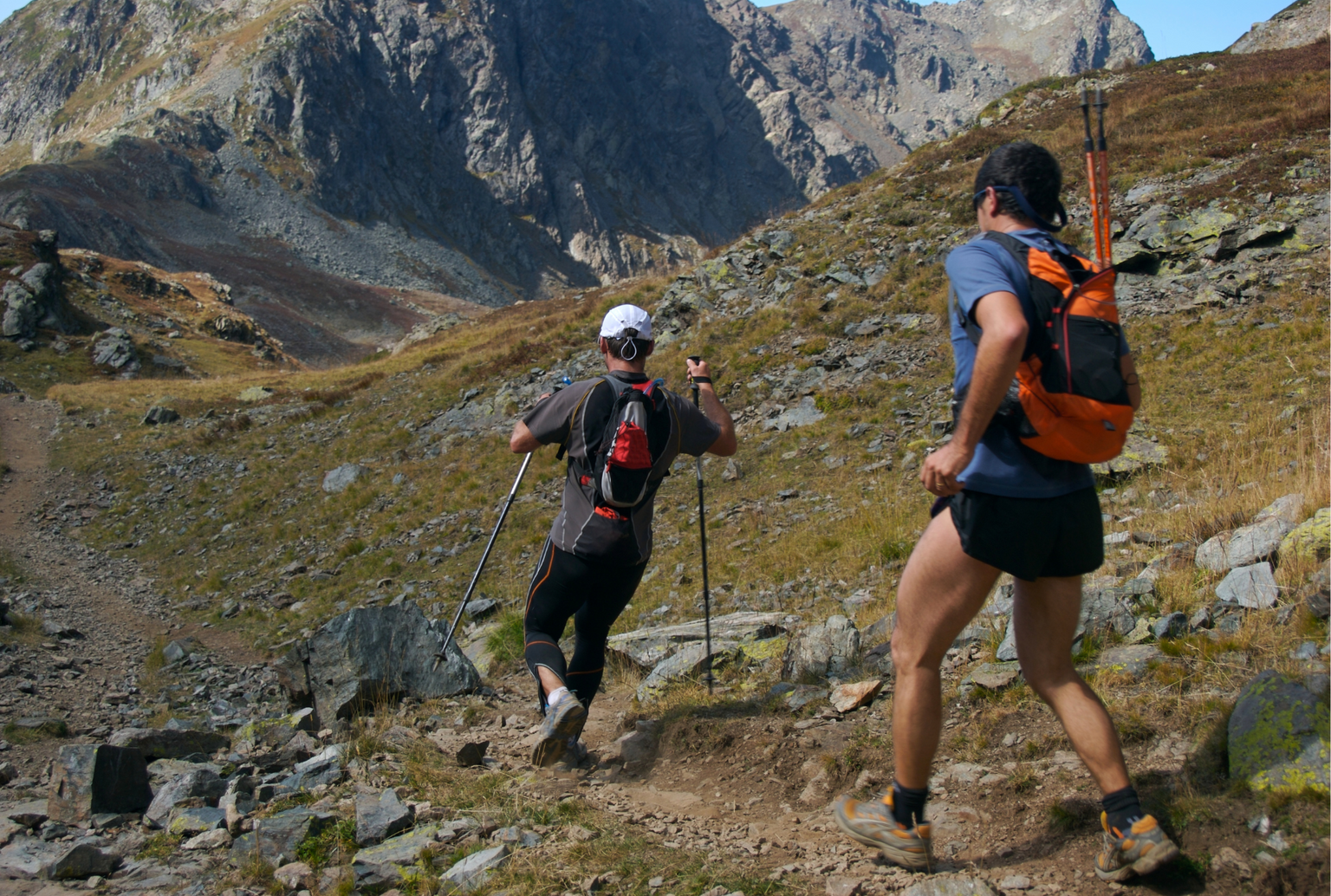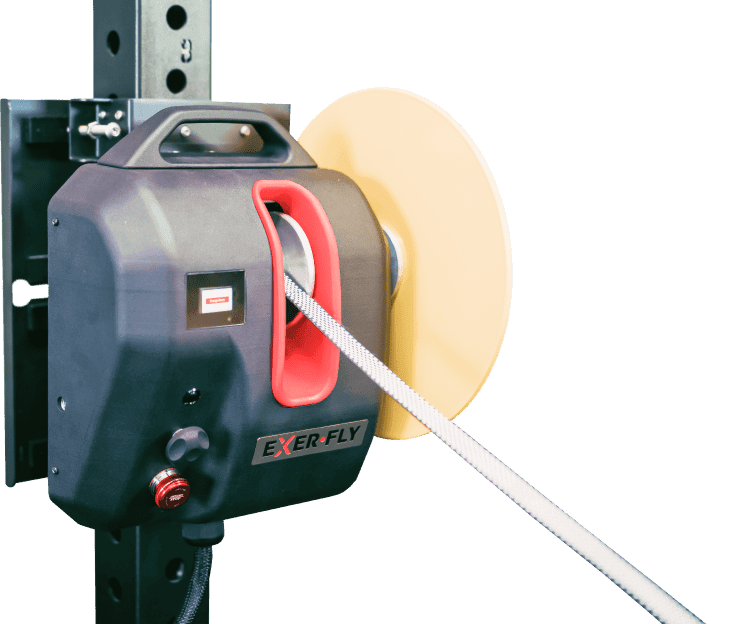
How to Strengthen Your Descending: Eccentric Training For Trail Running and Hiking
Although hiking and running downhill are less strenuous on your lungs compared to hiking uphill, they can still place significant strain on your core and quadricep muscles. A nine-year study by a researcher at the University of Innsbruck revealed that a staggering 75% of hiking accidents happen during the descent (1). Even on the ultimate of climbs, Mount Everest, almost 84% of deaths in non-Sherpa climbers occurred on their descent—after either successfully reaching the top of Everest or after turning back before reaching the summit (2).
The Risks of Descent
When hiking and running, most athletes' focus is on reaching the summit, “bagging another top” or, in Colorado, reaching the high peaks by lunchtime to descend before afternoon storms blow through at high altitude. Nevertheless, in the world of mountain hiking, reaching the top is only the halfway point. You must retrace your steps or traverse down to safety and back to the trailhead.
So, although ascents are deemed more taxing on the cardiovascular system and muscular strength, prolonged descents can lead to muscle fatigue, particularly in the quadriceps and stabilizing muscles, due to an increase in eccentric muscle contractions. The risks of overuse injuries and falls increase exponentially, especially when you add high altitude and environmental factors that influence muscle fatigue, gait mechanics, performance, mountainous terrain, and weather.
Key Muscles Involved in Descents
Researchers studying descents during hiking and mountaineering focus on understanding the physiological demands, muscle activation patterns, and biomechanical factors to optimize performance and reduce injury risks. Eccentric muscle actions involve the muscle lengthening under tension, which is particularly important during movements that resist gravity, such as descending, along with significant activation of ankle stabilizer muscles, which play a crucial role in maintaining stability on uneven terrain. Activation of core muscles, including the abdominals, lower back, and hip stabilizers, is essential for maintaining posture, balance, and efficiently transferring forces between the upper and lower body.
Eccentric Muscle Action and Injury Prevention
When descending, the knee extensors (primarily the quadriceps femoris) function as brakes to absorb energy, reducing the risk of injury from slips or falls (3). Similar muscle activity is observed in sports requiring rapid deceleration, quick stretch-shortening cycles, or sudden changes in direction (4). During these "braking" actions, the knee extensors generate force through eccentric contractions. Therefore, enhancing eccentric strength in the knee extensors is crucial not only for injury prevention but also for improving athletic performance.
Training for Eccentric Loads
Training for eccentric muscle loads, particularly to prepare for the demands of mountain descents, is critical for athletes involved in trail running, hiking, and climbing. Eccentric strength training improves muscle endurance, strength, and injury prevention, primarily in the quadriceps, hamstrings, and calves. These muscles control the body’s downward momentum and help decelerate during downhill movements, reducing muscle damage and delayed onset muscle soreness (DOMS).
For example, when descending, stride length and cadence changes increase time in the air. This shift in running form and posture magnifies ground impact and braking forces. Several studies show that eccentric training enhances muscle strength, power generation, and coordination during eccentric movements (5,6,7).
Eccentric Training Methods
Traditional eccentric strength exercises include negative squats, eccentric step-downs, plyometric drills, and using chains and exercise bands to create overload. Sport-specific exercises, such as controlled downhill running, prepare muscles for descent demands. An effective training tool in this space is flywheel resistance training (FRT), which utilizes inertial flywheel devices. These provide resistance throughout an exercise’s range of motion and create eccentric overload.
Flywheel Resistance Training (FRT) and Accentuated Eccentric Load Training
Flywheel resistance training devices utilize the inertia of a spinning wheel to provide greater eccentric load than conventional weight training (8). The athlete generates concentric force to spin the flywheel, and the harder they pull, the greater the eccentric resistance.
Techniques for Achieving Eccentric Overload with FRT
Options for achieving eccentric overload with FRT devices include:
- Varying Tempo on the Concentric Phase: Focus on maximum contraction intensity during the concentric phase and resist the load during the eccentric phase (decelerating, slowing down the tempo or braking to a stop). These will all increase time under tension and enhance muscle recruitment.
- Range of Motion: Performing an exercise with varying ranges as in ½ squat followed by ¼ squat where all the kinetic energy created during the maximal intensity concentric phase is then absorbed in the reduced ¼ squat. The athlete can play around with various ranges to achieve the best overload (9).
- Assisted Concentric Reps: When performing during the concentric phase the athlete holds onto and pushes with the hands from an immobile device such as barbell, rack or a T-bar stand, thus creating an assisted increase in velocity during the concentric phase. Then releases the hands on the eccentric phase so that the overload can be absorbed (9).
- Advanced Eccentric Overload with Exerfly's Motorized Technology: Exerfly's Motorized Technology further enhances eccentric overload by up to 80%, adjusting in real-time based on concentric force. For instance, if set to a 20% boost, the eccentric phase gains 20% more energy than the concentric phase.
Conclusion
Eccentric strength training is critical for athletes tackling mountain descents, improving muscle endurance, strength, and reducing DOMS and injury risks. FRT provides this eccentric overload, enhancing performance and resilience on the trail.
References
- Faulhaber. M, Pocecco. E, Posch. M and Ruedl. G (2020) Accidents during Mountain Hiking and Alpine Skiing – Epidemiological Data from the Austrian Alps. German Journal of Sports Medicine. 71:11 293-298.
- Clark, B. and Periard, J. (2023) Why is climbing Mount Everest so dangerous?Published online https://theconversation.com 25th May 2023.
- Vogt, M. & Hoppeler, H.H. (2014) Eccentric exercise: Mechanisms and effects when used as training regime or training adjunct. Jnl of Applied Physiology. 116: 1446-1454.
- Saez de Villarreal, Eduardo, Requena, Bernardo, Cronin J.B. (2012) The Effects of Plyometric Training on Sprint Performance: A Meta Analysis. Jnl of Strength & Conditioning Research. 26 (2): 575-584.
- Hu, Z., Liu, Y., Huang, K., Huang, H., Zhang, Y. and Yuan, X. (2024) Effects of Inertial Flywheel Training vs. Accentuated Eccentric Loading Training on Strength, Power, and Speed in Well-Trained Male College Sprinters. Life 14, 1081 1-16.
- Seger, J.Y.; Thorstensson, A. (2005) Effects of eccentric versus concentric training on thigh muscle strength and EMG. Int. Jnl Sports Med. 26, 45–52.
- Harris-Love, M.O.; Gollie, J.M.; Keogh, J.W.L. (2021) Eccentric Exercise: Adaptations and Applications for Health and Performance. Jnl. Functional Morphology Kinesiology 6, 96.
- Vicens-Bordas, J., Esteve, E., Fort-Vanmeerhaeghe, A., Bandholm, T. & Thorborg, K. (2018) Is inertial flywheel resistance training superior to gravity-dependent resistance training in improving muscle strength? A systematic review with meta-analyses. Jnl. Science Medicine Sport 21, 75–83.
- Martin-Hernandez, D. (2023) Flywheel Eccentric Training: How to Effectively Generate Eccentric Overload. Strength & Conditioning Journal. 1-16.






